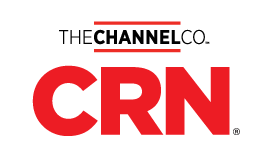
One small step at a time.
Azure, of course, is Microsoft’s collection of integrated cloud services. These services include analytics, high-performance computing, database, mobile, networking and web. In part by collecting these services, Azure helps IT professionals and developers get more done in less time, extend their existing data centers, and move to the cloud’s pay-as-you-go fee model.
For many users, that’s highly attractive. Consider a few new stats:
- Microsoft recently revealed that it’s now signing up 120,000 new Azure customer subscriptions a month.
- Some 5 million organizations currently use Azure’s Active Directory, a multitenant cloud-based directory and ID-management system.
- More than 4 million developers are registered with Azure’s Visual Studio Team Services, which provides a fast, easy way to plan, build and ship software across a variety of platforms.
- And some 2 trillion messages a week are now being processed by the Azure IoT Suite, which offers Internet of Things solutions, visualization capabilities, security and more.
What’s more, Azure is constantly growing and evolving, adding features, capabilities and applications. That, in turn, can help your customers add value, gain flexibility and lower costs.
So far, so great. But with its long list of programs, Azure can also present a daunting challenge: Where to get started? And what to add next?
Small, not heroic
Small, incremental changes are what’s advocated by Alex Brown. He’s CEO of 10th Magnitude, a Chicago-based services provider that works with Azure to provide cloud-transformation services for customers.
“Change is very difficult,” Brown says, “and it’s no different in IT than it is in any other part of an organization. So we find that the best approach we can take is small, incremental change, rather than trying to convince them to undertake a huge, kind of heroic change.”
Those small increments, Brown says, add up over time. “It tends to snowball,” he says. And as clients see progress, they get excited and start building momentum.
For example, Brown and his colleagues work with a company that manages heavy equipment such as front-loaders and cranes. Over several years, the company has implemented several Azure features, including storage. When Microsoft supplemented Azure with machine learning, Brown’s team spoke to the company about adding predictive analytics to prevent unplanned maintenance and downtime.
“All of a sudden,” Brown adds, “it was a very relevant conversation for this customer, and it really allowed them to expand how they were using the Azure platform.”
So whether you’re helping new customers get started with Azure or older customers add new Azure programs, it’s just like Aesop told us: Slow and steady wins the race.
To learn how you can help your customers change, watch a partner video, Helping Customers Change, featuring Alex Brown of 10th Magnitude. And for best-practice insights into other important topics, browse more than 50 partner videos in the Cloud Business Transformation Center Video Vault.

